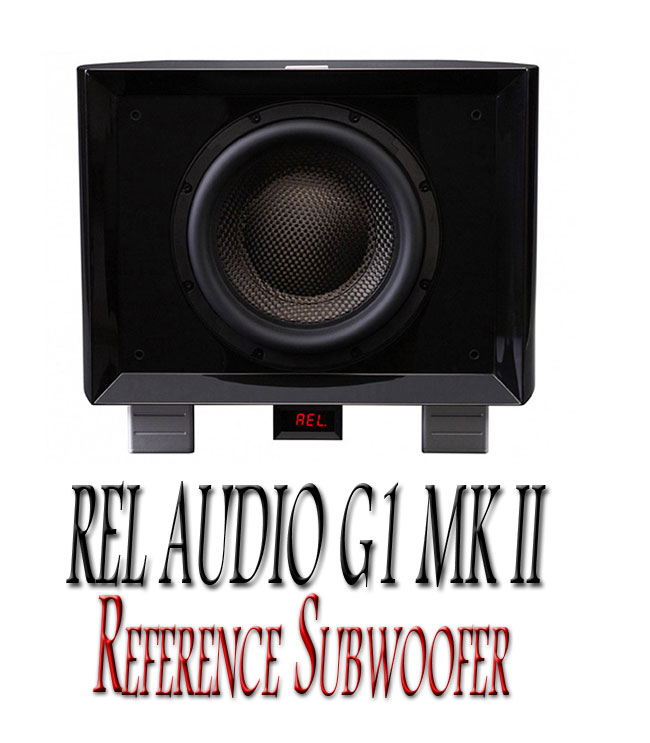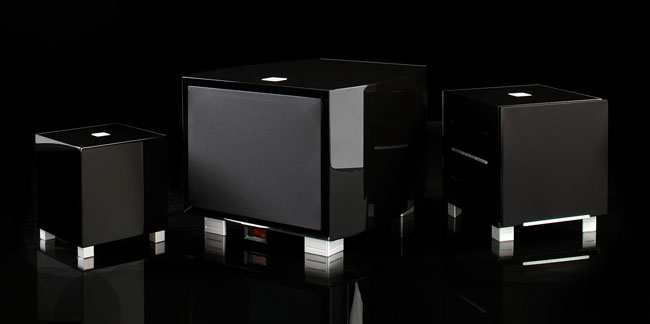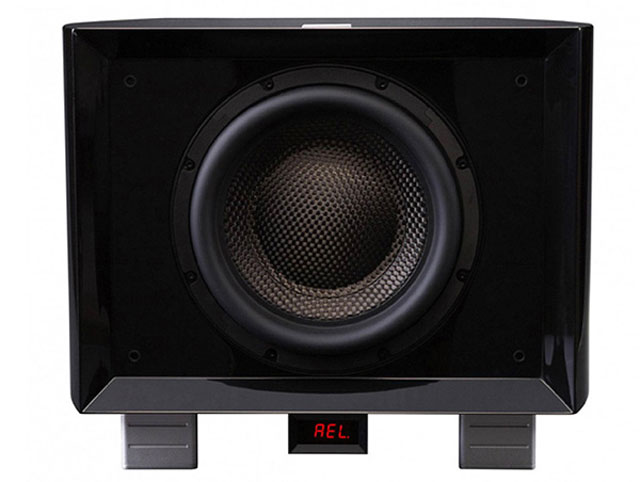REL AUDIO G1 MKII Reference Subwoofer


The first time I heard REL subwoofers was at an exhibitor’s room at the Rocky Mountain Audio Fest. I listened to this super-refined bass as I passed by a particular exhibitor. Without noticing, I found myself doing the Michael Jackson MoonWalk right into this room. Entering, I found myself doing a double-take. The overall sound coming from a pair of Vienna Acoustics Liszt loudspeakers and these Rel subs was seamless at all frequencies with nothing overbearing, no matter the musical content. I noticed that the bass and sub-bass were first class; the sound was beyond excellent coupled with a vast soundstage and a level of realism like I never heard before. It felt like there were no electronics, speakers, or subs in that room, just music. I felt like I was a part of a studio recording with the lights out. When I inquired about the system components being displayed, the component that stuck with me the most was the pair of REL S5 subwoofers. Every component in that room was world-class (costly) and well worth it. However, upon research, I found a REL Sub to fit within my room dimensions – and within my limited budget. And so my journey with REL Audio began right then and there.

 I have learned to be critical of building a top-notch audio system and found “Synergy” to be the most valuable ingredient. System synergy and personal taste are very critical when evaluating any high-end audio system. I felt REL was the best fit for my musical tastes after having experienced a plethora of subwoofers. I stayed abreast of the REL model line, as they offer many brands; however, after a few months, my interest was captivated in reading reviews about their reference series. What exactly are reference subwoofers, and what do they do differently? Upon conducting much research, I decided to take the plunge to satisfy that audio itch many of us all have. An itch that can only get scratched by reviewing the REL Reference Gibraltar 1 Mk II Series sub (REL G1 Mk II herein).
I have learned to be critical of building a top-notch audio system and found “Synergy” to be the most valuable ingredient. System synergy and personal taste are very critical when evaluating any high-end audio system. I felt REL was the best fit for my musical tastes after having experienced a plethora of subwoofers. I stayed abreast of the REL model line, as they offer many brands; however, after a few months, my interest was captivated in reading reviews about their reference series. What exactly are reference subwoofers, and what do they do differently? Upon conducting much research, I decided to take the plunge to satisfy that audio itch many of us all have. An itch that can only get scratched by reviewing the REL Reference Gibraltar 1 Mk II Series sub (REL G1 Mk II herein).
As usual, I purchased a single unit, knowing very well that I am a two-channel listener. If you are thinking about making a purchase, you’re anything like me, just purchase a pair from the start. Upon taking receipt of the REL subwoofer via FedEx freight, the driver used a huge dolly and deposited the single unit right inside my garage. I ate an entire box of Wheaties and got into unboxing the REL G1 MkII sub. Warning: moving and unpacking these subs is a two-person job minimum as these units are heavy and packed very tight. Kudos to REL Audio. Attention to every detail equates to superior quality.


Design Features of the REL G1 Mark II
The REL G1 Mark II features a Class A/B MOS-FET amplifier design of 600 Watts – a 150-watt increase from the previous G2 model. A front-firing 12″ 300mm long-throw carbon fiber cone with inverted carbon fiber dust cap for light-weight and speed, offering sustainable gains in low-end extension and impact. At 108 pounds, an increase of more than 20 pounds of its previous model, the cabinet size and presence is significant. Its aesthetics are breathtaking, another ingrained quality of REL. No stone is left unturned when it comes to quality. The beautiful piano black lacquer finish and a unique curved profile, with silver feet and REL emblem standout, is set in an elegant way that makes the entire design feel uplifting and classy, makes you feel like you’ve finally arrived.
The G1 comes with a small palm fitting attractive multi-function remote control that allows for gain, crossover, and phase adjustments. This feature enables the user to fine-tune the Sub while not leaving his/her sweet spot. Takes out the back and forth, sit down listen, get up adjust, basically eliminates the second-guessing from the adjustment and tuning equation. All remote adjustments are available in small increments via an LED display located on the subs front display.
One of the essential features of the REL Sub line is the ability to connect directly to your power amps and bypassing the system preamp, with the signal is taken directly from the amp speaker terminal thus offers a mode of High-Level Input for ultimate two-channel performance and music reproduction, also a more natural transition/integration with the primary speakers.
Setup
As previously mentioned, these subs are not light, so with that said, unless you are a powerlifter competing for the Olympics. May I suggest you phone a friend before un-boxing for initial setup. I used a set of furniture moving pads underneath each sub footer to get the Rel into position. I then slid the unit into its first spot. Please keep in mind all this would be repeated due to after one week, I ordered a second sub and had to repeat the setup process a second time. (probably needed the rest). After connecting one end of the Neutrik Speakon cables on my amp, I connected directly to the REL G1 Mark II subs. The first week before the second unit arrived, I played with their listening position until I discovered a decent performance. I needed to know what the Sub brought to the part, so I played some very familiar tracks with good bass tones to find out if anything changed. You bet your bottom dollar things changed. Unlike what I heard at RMAF, however, the potential was there.
I could tell without a doubt that compared to the conventional subs I’ve used in the past, absolutely nothing put out a bass line like this REL Reference Sub. They label it a Reference Sub for a reason; the overall quality of the bass is a cut above the competition. Within a week, the second Sub showed up, and in the meantime, I had time to work with the first subs tweaking and fine-tuning. The Sub was initially placed in the rear corner about 18 inches out and angled very slightly toed in. Frequency and imaging were very impressive from this initial setup. After a few tracks and hours, I recall making minor adjustments to the angle for better bass energy and output. The setting phase proved quite simple; this was due to being able to accomplish this step from my listening position by confirming how well the Sub integrated with the main speakers. I loved it. As the owner’s manual will inform you, initially setting the volume is not crucial as the volume will change until the drivers are fully broken-in.
 Once the second Sub arrived it was a rap. I’m telling you from experience, this set-up process was the most effortless process I’ve ever had the pleasure of indulging in (in the past I knew I had to integrate a pair of new subs, I would cringe because I knew it was going to be painful and time-consuming). However, with the REL G1 Mark II Reference Subwoofers, setup was relatively easy and fun. The result will let you know how vital bass is to your system. These babies are not toys; they are Reference music producers. I’m sure in time once the break-in period is over that I will make a few subtler tweak changes. Also, let me not forget to elaborate on the crossover settings. Once again, with the use of the remote control, I saved myself a bit of exercise by not having to go to the back of the subs to change crossover settings. Dear reader, this was accomplished by adjusting the settings from the remote while sitting in my listening chair. The bottom line is that each Rel sub was positioned at a slightly different angle due to how they integrated with my main speakers. The gain and crossover position was also a bit different for each unit. This results in an improved ambiance, spatial cues, increased macro, and microdynamics, which will cause you to sit up and take notice and ask yourself, “where did that come from?”
Once the second Sub arrived it was a rap. I’m telling you from experience, this set-up process was the most effortless process I’ve ever had the pleasure of indulging in (in the past I knew I had to integrate a pair of new subs, I would cringe because I knew it was going to be painful and time-consuming). However, with the REL G1 Mark II Reference Subwoofers, setup was relatively easy and fun. The result will let you know how vital bass is to your system. These babies are not toys; they are Reference music producers. I’m sure in time once the break-in period is over that I will make a few subtler tweak changes. Also, let me not forget to elaborate on the crossover settings. Once again, with the use of the remote control, I saved myself a bit of exercise by not having to go to the back of the subs to change crossover settings. Dear reader, this was accomplished by adjusting the settings from the remote while sitting in my listening chair. The bottom line is that each Rel sub was positioned at a slightly different angle due to how they integrated with my main speakers. The gain and crossover position was also a bit different for each unit. This results in an improved ambiance, spatial cues, increased macro, and microdynamics, which will cause you to sit up and take notice and ask yourself, “where did that come from?”
What did it sound like with music
One word can tell it all: “Fabulous!” The REL G1 Mk II represents the first time I have heard any full-range loudspeaker integrate with a pair of subwoofers and not draw attention to itself. Both mains and subs were one unit – a true partnership within my audio system.
 For this review, I decided to check out a favorite jazz recording released in 2006. George Benson and Al Jarreau entitled “Giving it UP” album is a classic. A pair of musical genius teaming up for the first time. I was taken aback by all the information I was missing before the addition of the REL G1 Mark II subwoofers. Veterans, singer-guitarist George Benson, and singer vocal percussionist Al Jarreau took jazz standards to another level. One of the tracks that stood out for me was Billie Holiday’s God Bless The Child sung by the beautifully talented Jill Scott. With George Benson joining the duet and the incomparable late Al Jarreau playing percussions, there was so much energy in the room from this recording. The REL Subs did a masterful job in filling in the bass tones as well as the harmonics of the recording. The REL is very fast, with no bleeding or smearing. During this excellent recording session, a lot is going on at the same time. However, the Tekton Encore/REL Sub combination did not lose its composure. The added sense of ease and dynamic range was very engaging—no straining whatsoever. Just sit back, relax, and enjoy the brilliance of these great artists.
For this review, I decided to check out a favorite jazz recording released in 2006. George Benson and Al Jarreau entitled “Giving it UP” album is a classic. A pair of musical genius teaming up for the first time. I was taken aback by all the information I was missing before the addition of the REL G1 Mark II subwoofers. Veterans, singer-guitarist George Benson, and singer vocal percussionist Al Jarreau took jazz standards to another level. One of the tracks that stood out for me was Billie Holiday’s God Bless The Child sung by the beautifully talented Jill Scott. With George Benson joining the duet and the incomparable late Al Jarreau playing percussions, there was so much energy in the room from this recording. The REL Subs did a masterful job in filling in the bass tones as well as the harmonics of the recording. The REL is very fast, with no bleeding or smearing. During this excellent recording session, a lot is going on at the same time. However, the Tekton Encore/REL Sub combination did not lose its composure. The added sense of ease and dynamic range was very engaging—no straining whatsoever. Just sit back, relax, and enjoy the brilliance of these great artists.
Another great song on this disc is one of my favorites – and a Miles Davis classic – entitled ‘Long Come Tutu. Both Benson and Jarreau rearranged the composition and took it to another smooth jazz level. The Encore/REL Sub combo took it to the limit. The bass lines are incredibly well-documented in this excellent material. This particular song made me sit up and shake my head. Incredible bass tones can do that to me. With the new REL Subs in, I could easily detect the bass play’s fingering technique. The tightness of the drum hit and percussive swings were nothing short of exciting. All the ambience, spatial cues, macro, and microdynamics were on point. Accuracy and balance were prevalent, accurate pitch and harmonics improved from the previously before the addition of the REL G1 MK II Sub. All I can say is that I am beside myself…. Simply Amazing.
Conclusion
In my personal opinion, when it comes to subwoofer performance, quality, and technology, REL Audio bass products are untouched in the audio industry. Their bass units have easily complimented every speaker paired with them that I have owned throughout the years. Setting up a sub is not an easy process. However, REL takes most of the frustration away with their on cutting edge technology. They offer a plethora of models, yet only two Reference models are available as of now. A definite win-win, and from what I have experienced with a pair of the G1 MKII subs, I wholeheartedly recommend them!


Moreno Mitchell
REL G1 Mk II Sub Specifications:
Price: $5500 each
Closed box, front-firing 12″ driver
12″ 300mm long-throw, carbon fibre with inverted carbon fibre dust cap
Low-Frequency Extension, -6dB at 15 Hz
Input Connectors, High lever Neutrik Speakon, Low Level, stereo RCA, LFE, RCA, LFE XLR
Output Connectors, High-Level RCA, Balanced XLR, Daisy Chain Outputs
Power Output 600 Watts (RMS)
Amplifier type: Class A/B
Protection System: Fully Electronic Set Safe
Dimensions: W. 22.5, H 18.2, D 26.8 inches.
Net Weight 108 lbs.
Finish: Piano Black Lacquer, 12 Coats.
Supplied Accessories: Neutrik Speakon, User Manual, Power cable and Remote Control.
Associated Equipment:
LauferTeknik 64 Memory Player
Behold BPA 768 amplifier and APU preamp
Pro-Ject RPM10 Carbon Turntable
Van Den Hul Crimson Stradivarius cartridge
Hemmingway Audio Creation Series speaker cables
Hemmingway Audio Creation Series AC cords
Puritan Audio Labs PSM 156 AC conditioner
Stealth Audio Power cables, digital
Audience AU SX Phono cables
Tekton Design Encore speakers
Two REL G1 MKII subwoofers
Bybee Technologies Bybee V2 Quantum Signal Enhancers
Various Isolation Devices
Stereo Times Masthead
Publisher/Founder
Clement Perry
Editor
Dave Thomas
Senior Editors
Frank Alles, Mike Girardi, Russell Lichter, Terry London, Moreno Mitchell, Paul Szabady, Bill Wells, Mike Wright, and Stephen Yan,
Current Contributors
David Abramson, Tim Barrall, Dave Allison, Ron Cook, Lewis Dardick, John Hoffman, Dan Secula, Don Shaulis, Greg Simmons, Eric Teh, Greg Voth, Richard Willie, Ed Van Winkle, Rob Dockery, Richard Doron, and Daveed Turek
Site Management Clement Perry
Ad Designer: Martin Perry







Be the first to comment on: REL AUDIO G1 MKII Reference Subwoofer